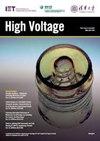真空表面闪络陶瓷绝缘材料的设计与3D打印
IF 4.9
2区 工程技术
Q1 ENGINEERING, ELECTRICAL & ELECTRONIC
引用次数: 0
摘要
陶瓷-真空界面电强度差,制约了各种电气/电子器件的发展。随着对紧凑性和性能改进的进一步要求,基于传统陶瓷制造工艺的解决方案的局限性变得越来越突出。在这项研究中,提出了一种利用3D打印技术来构建具有设计结构的陶瓷绝缘的制造方法。分析了不同工艺参数下3d打印陶瓷的工艺特点、介电性能和形貌。结果表明,填料的粒度、烧结温度和助烧剂对材料的介电性能和内部缺陷有显著影响。最后,通过优化工艺参数,从电场优化和抑制二次电子发射的角度,制备了具有低介电损耗和复杂结构的Al2O3陶瓷,以抑制真空闪络。与传统的陶瓷绝缘子制作方法相比,该方法制作工艺准确高效,绝缘性能高,具有较好的工业应用前景。本文章由计算机程序翻译,如有差异,请以英文原文为准。
Design and 3D Printing of Ceramic Insulation for Surface Flashover Mitigation in Vacuum
Poor electrical strength of the ceramic–vacuum interface restricts the development of various electrical/electronic devices. Limitations of solutions based on conventional ceramics fabrication procedures are becoming prominent with the further demand for compactness and performance improvement. In this study, a fabrication method utilising 3D printing technology is proposed to construct ceramic insulation with designed structures. The processing characteristics, dielectric properties and morphologies of 3D-printed ceramics fabricated under different processing parameters were analysed. The results indicated that fillers' particle size, sintering temperature and sintering aids have significant influence on the dielectric properties and the internal defects. Finally, with optimised processing parameters, Al2O3 ceramics with low dielectric loss and complex structures were fabricated to inhibit vacuum flashover from the perspectives of electric field optimisation and secondary electron emission suppression. Compared with traditional ceramic insulator fabrication methods, the proposed construction strategy has an accurate and efficient fabrication process and high insulation performance, making it promising for industrial applications.
求助全文
通过发布文献求助,成功后即可免费获取论文全文。
去求助
来源期刊

High Voltage
Energy-Energy Engineering and Power Technology
CiteScore
9.60
自引率
27.30%
发文量
97
审稿时长
21 weeks
期刊介绍:
High Voltage aims to attract original research papers and review articles. The scope covers high-voltage power engineering and high voltage applications, including experimental, computational (including simulation and modelling) and theoretical studies, which include:
Electrical Insulation
● Outdoor, indoor, solid, liquid and gas insulation
● Transient voltages and overvoltage protection
● Nano-dielectrics and new insulation materials
● Condition monitoring and maintenance
Discharge and plasmas, pulsed power
● Electrical discharge, plasma generation and applications
● Interactions of plasma with surfaces
● Pulsed power science and technology
High-field effects
● Computation, measurements of Intensive Electromagnetic Field
● Electromagnetic compatibility
● Biomedical effects
● Environmental effects and protection
High Voltage Engineering
● Design problems, testing and measuring techniques
● Equipment development and asset management
● Smart Grid, live line working
● AC/DC power electronics
● UHV power transmission
Special Issues. Call for papers:
Interface Charging Phenomena for Dielectric Materials - https://digital-library.theiet.org/files/HVE_CFP_ICP.pdf
Emerging Materials For High Voltage Applications - https://digital-library.theiet.org/files/HVE_CFP_EMHVA.pdf
 求助内容:
求助内容: 应助结果提醒方式:
应助结果提醒方式:


